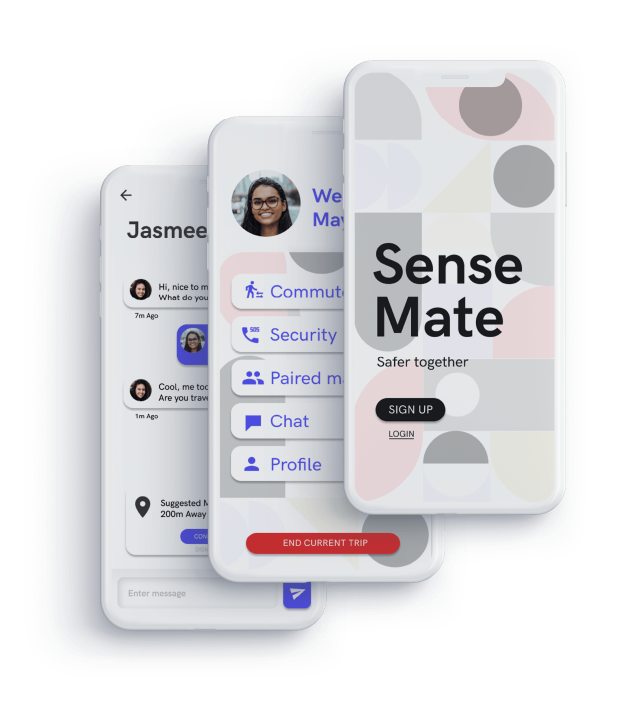





Problem Statement:
Women often feel anxious and unsafe when travelling alone on public transport, especially late at night or early in the morning when the services are empty.
Solution:
The recommended solution was designing a social mobile application that allows women to meet companions along their commutes to feel safe and connected as they travel.
Roles
Team
Understanding women's experiences commuting
As a team, we interviewed 10 women aged between 18-30 years to
understand their experiences commuting on public transport between
home, work and university.
 Findings from this user research were drawn out through affinity
diagramming, which led us to discover that women often feel
worried about their safety while commuting late at night and early
in the morning when fewer people are on the train. The
participants also noted how they feel concerned when other
travellers are intoxicated and are behaving antisocially.
Findings from this user research were drawn out through affinity
diagramming, which led us to discover that women often feel
worried about their safety while commuting late at night and early
in the morning when fewer people are on the train. The
participants also noted how they feel concerned when other
travellers are intoxicated and are behaving antisocially.
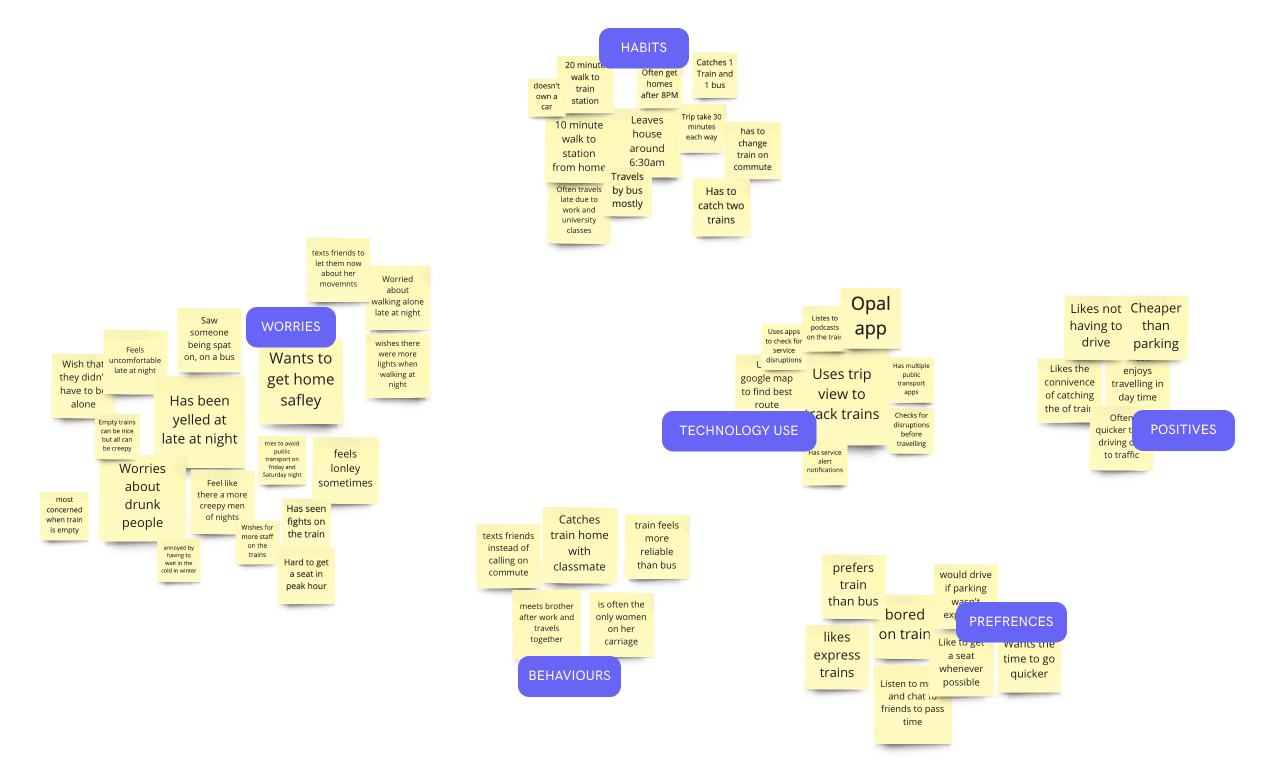

Understanding women's experiences commuting
From our user research, we defined one primary user type, as seen in the persona below. Our user, Cassie, is 27-years-old, works part-time and is a masters student. She commutes for an average of 2 hours each day via train, primarily between work, home and university. Her biggest worries are travelling on the train alone late at night with loud obnoxious groups of men making her particularly anxious. She wants to feel safe and relaxed while travelling and reach her destination on time.
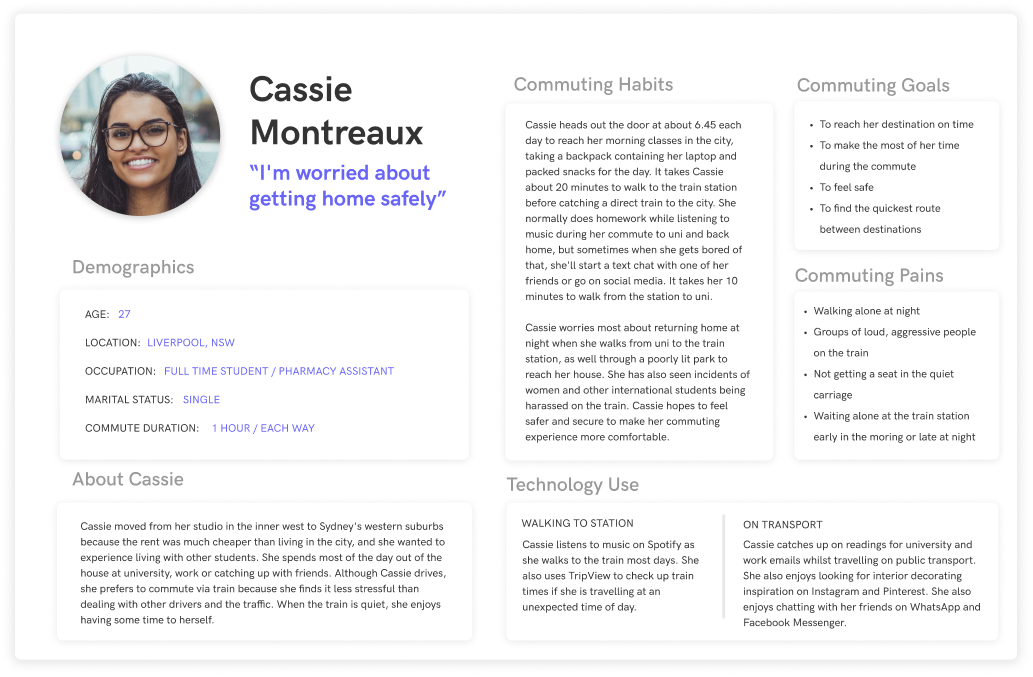
User Journey Mapping
Through our research and journey mapping, the most concerning
time for women travelling alone is often at night as they walk
to and from the train station. Quiet streets, a lack of
lighting, and large groups of men also contribute to women
feeling anxious and worried.

Design Directions
After understanding and exploring the issues and pain points that women experience commuting, we focused on ideating solutions that would support more positive experiences, especially late at night and early in the morning. These future designs should promote feelings of safety, ease and comfort for our users.
Based on our previous research, we began to ideate digital
solutions and feature prioritisation to foster positive commuting
experiences for our female users.
Through the ideation sessions and subsequent sketching, we
converged on developing a mobile application that would create
connections between women who were commuting at the same time. As
shown in our research, travelling together allows for a safer and
more enjoyable trip.
Feature Ideation & Prioritisation
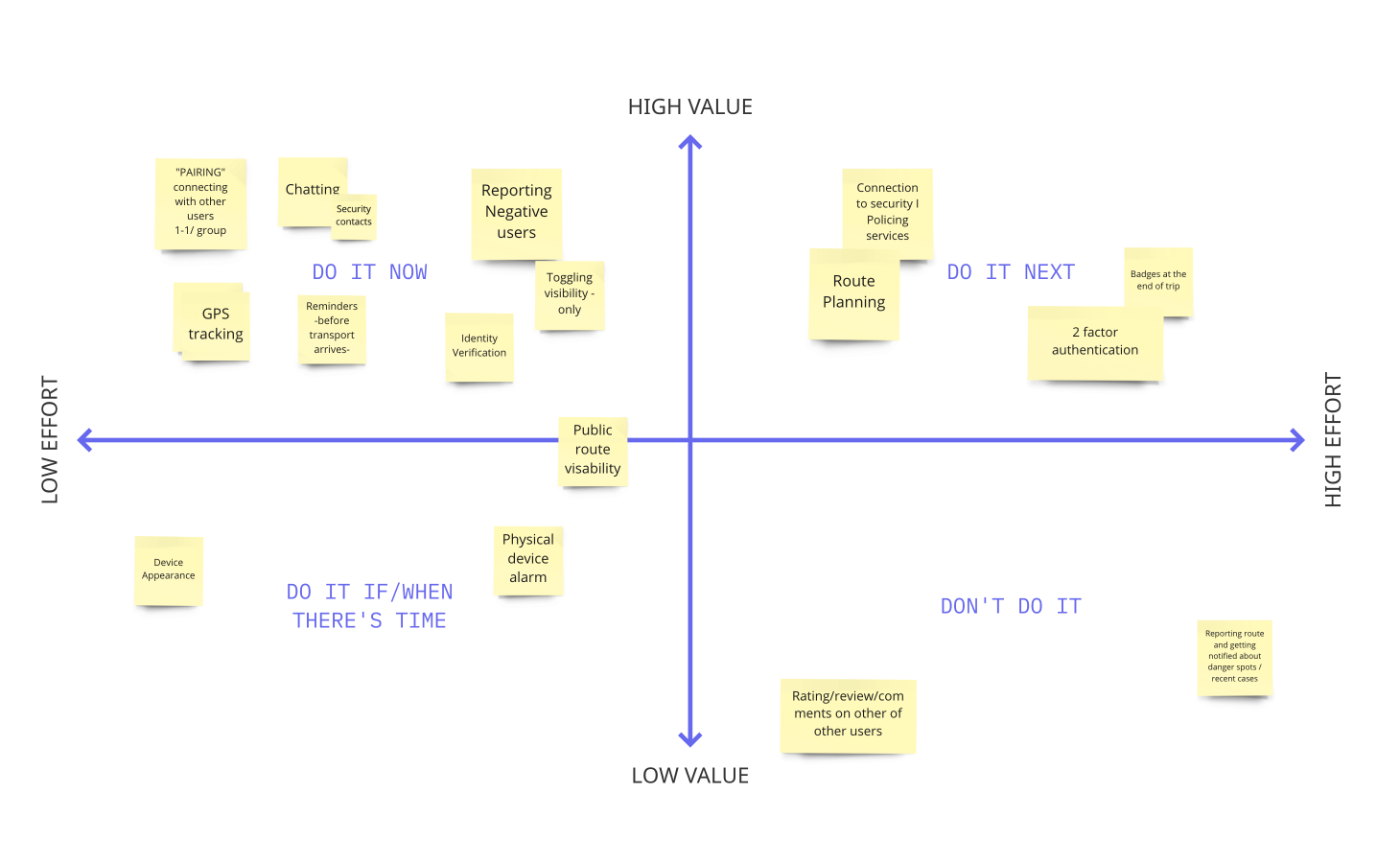
Sketches
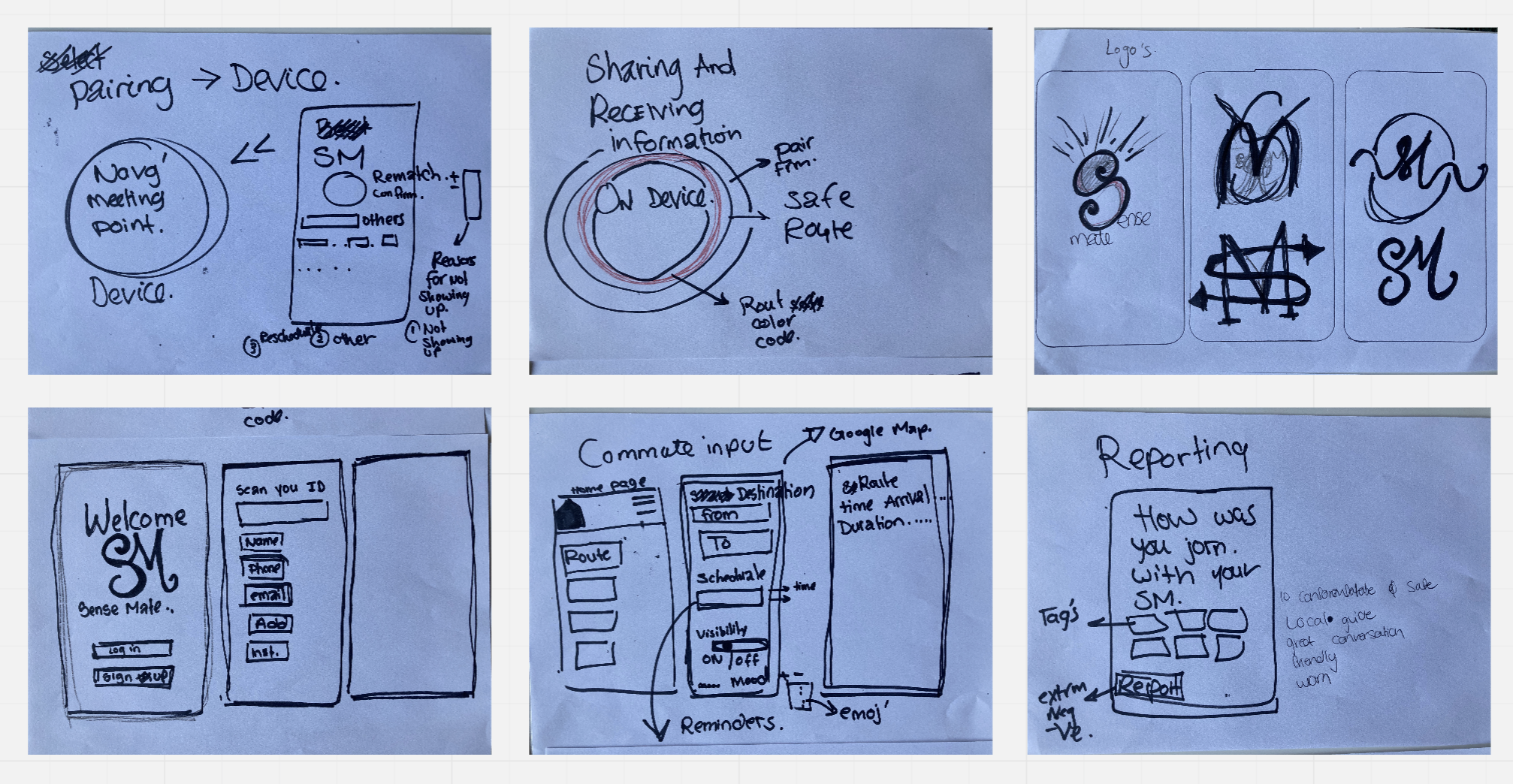
After defining the functionality, I designed a mid-fidelity prototype to validate the design features and the usability of the application. This prototype featured onboarding, pairing and chat user flows.
Mid-fidelity Prototype
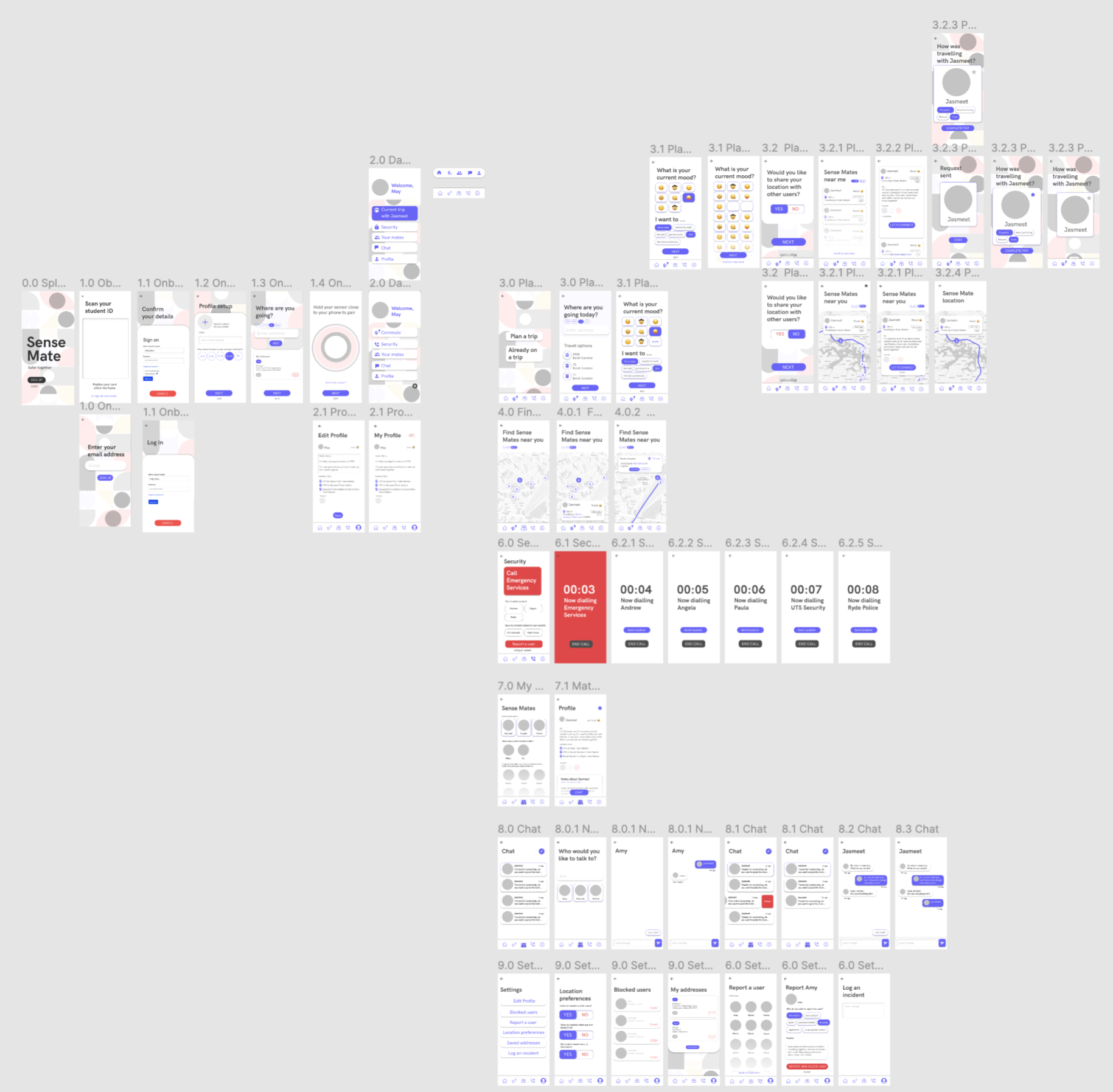
Usability Testing
Testing was conducted using mid-fidelity wireframes with five participants using the 'talk aloud' approach as they were asked to complete four tasks using the 'Sense Mate' prototype. The tests were recorded to analyse breakpoints and errors.

Usability Report
Issues that emerged from the usability testing were tabled and
tagged by criticality. These issues were iterated upon between
each of the usability testing sessions to ensure a productive
workflow and minimise pre-established issues.
The critical issues identified through the testing were primarily
with the onboarding process, which was able to be resolved by
providing clear feedback and timely user feedback. Navigational
interface issues were also resolved to enable the users to move
through the application more smoothly.
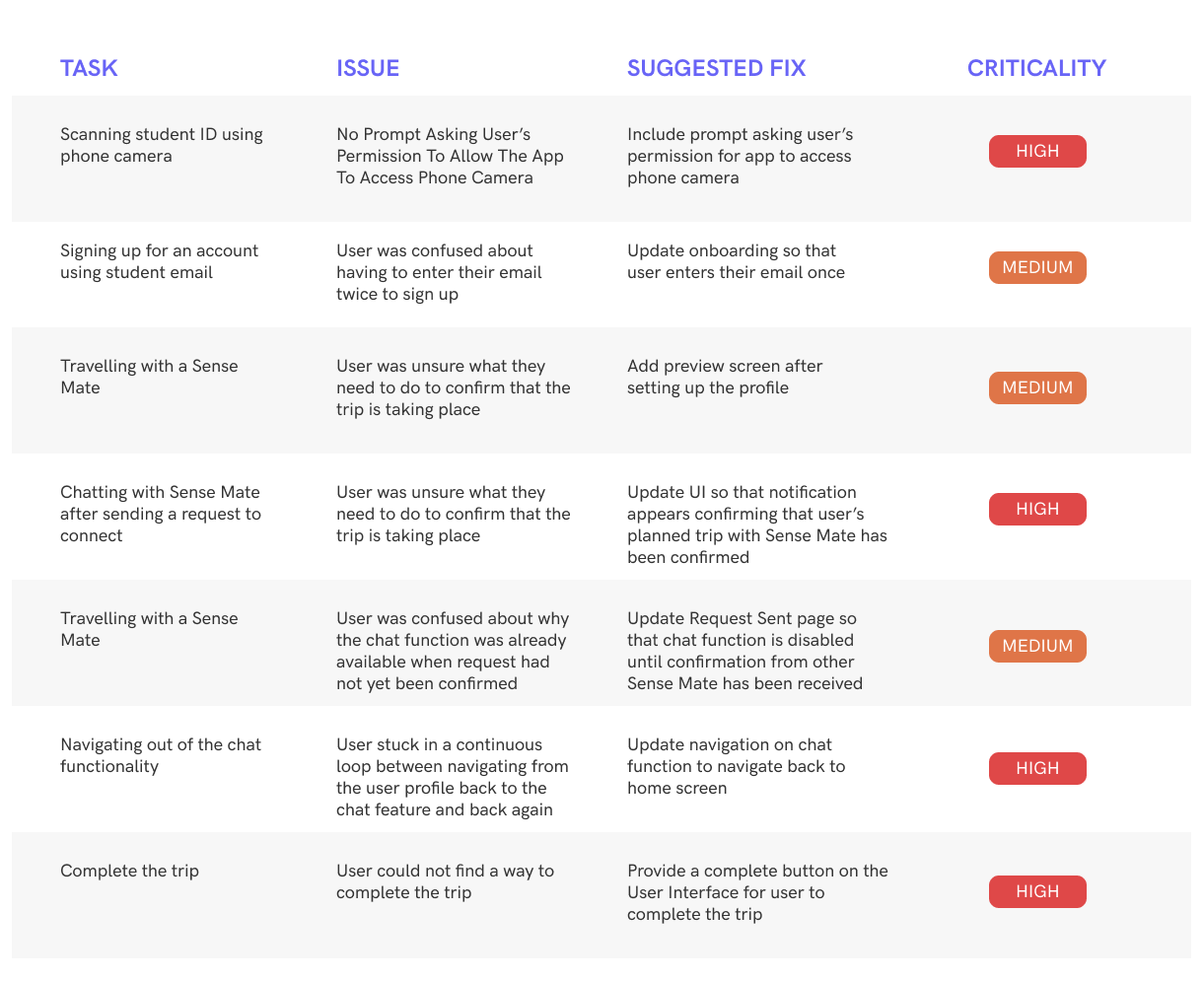
High-fidelity Prototype
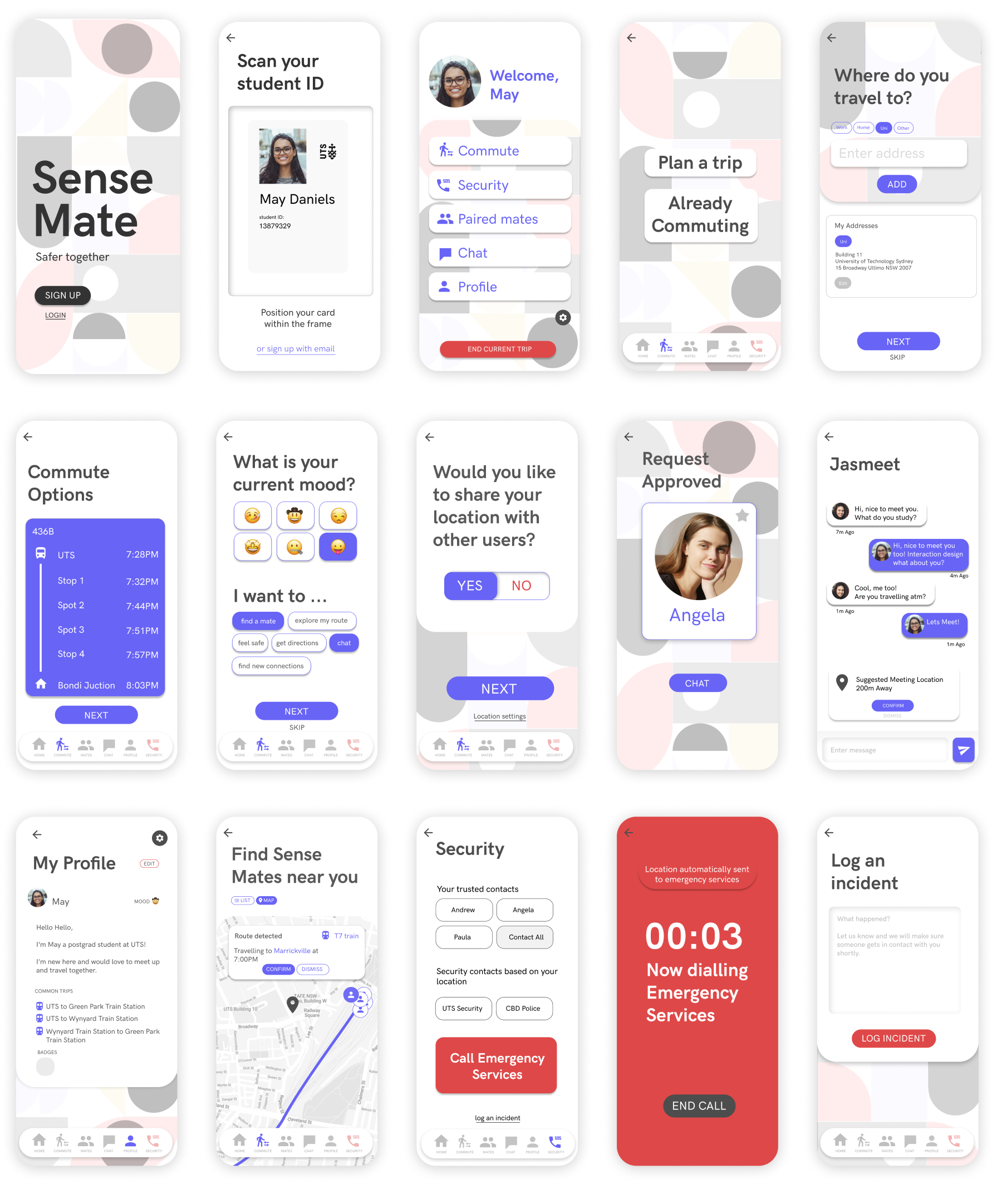
User Experience Evaluation
The user experience evaluation was conducted to understand the different factors that might affect the experience of using our proposed solution. We defined three key user scenarios and conducted role plays for each. We instructed one team member to act as the user, interacting with the prototype, while all other members observed and made notes on the users' experiences.
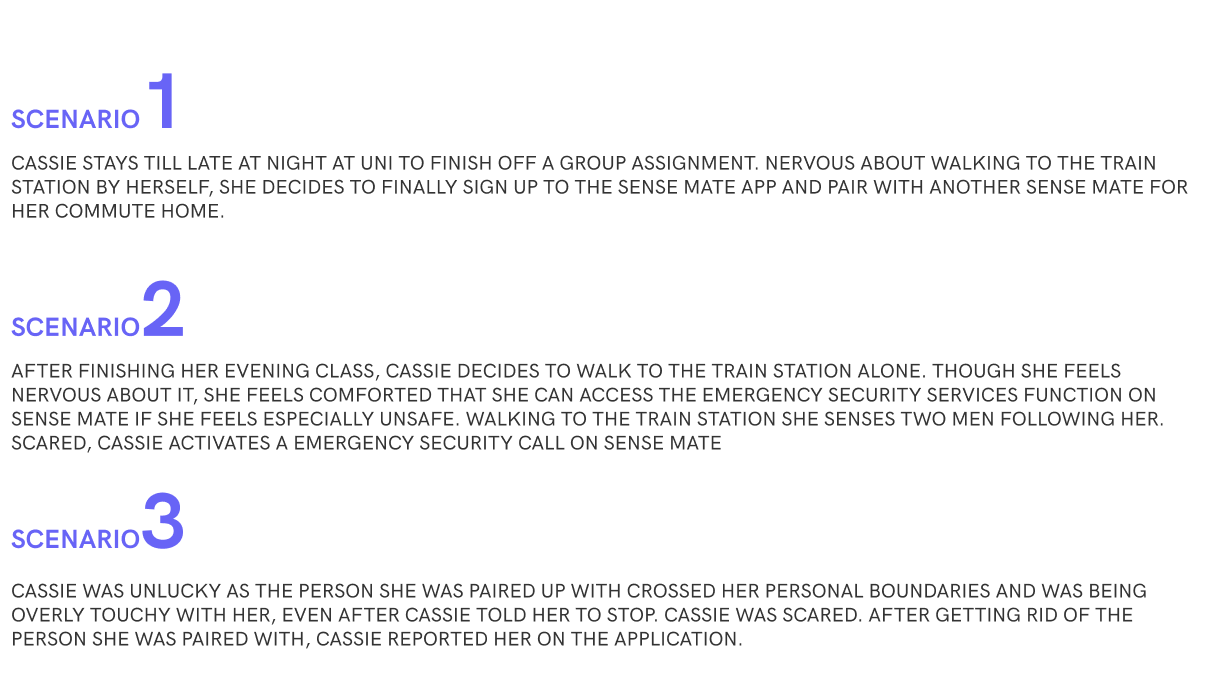
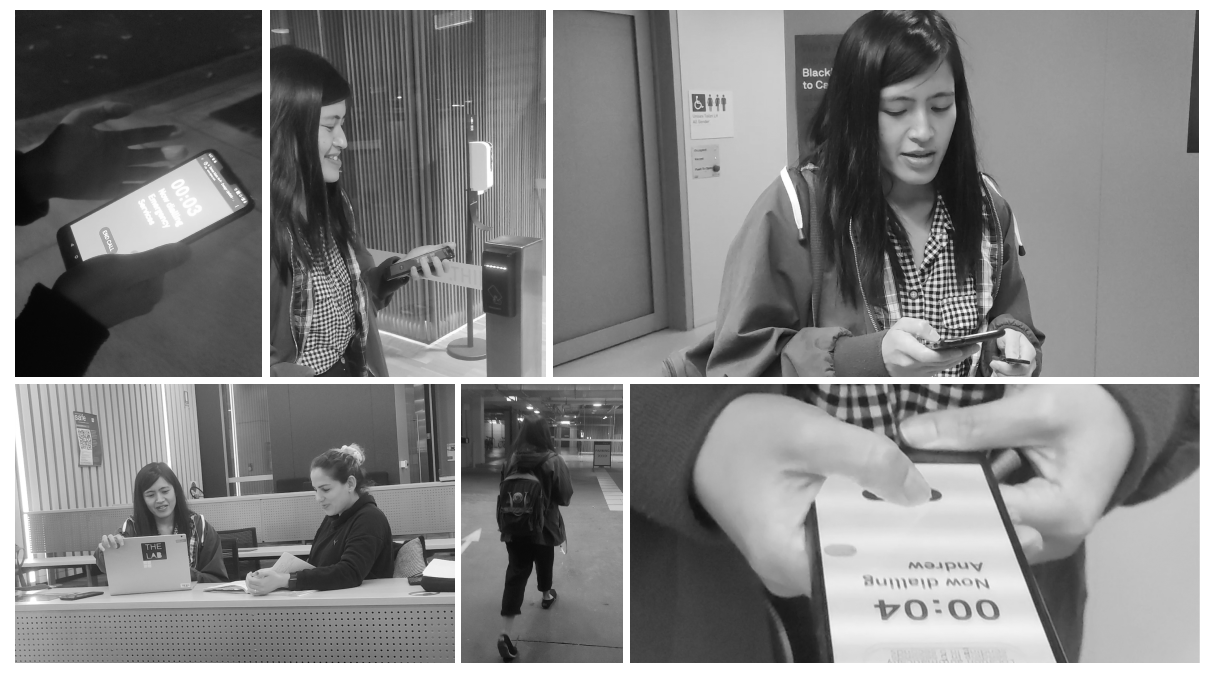
Evaluation Findings
We discovered the following issues that might affect user
experience:
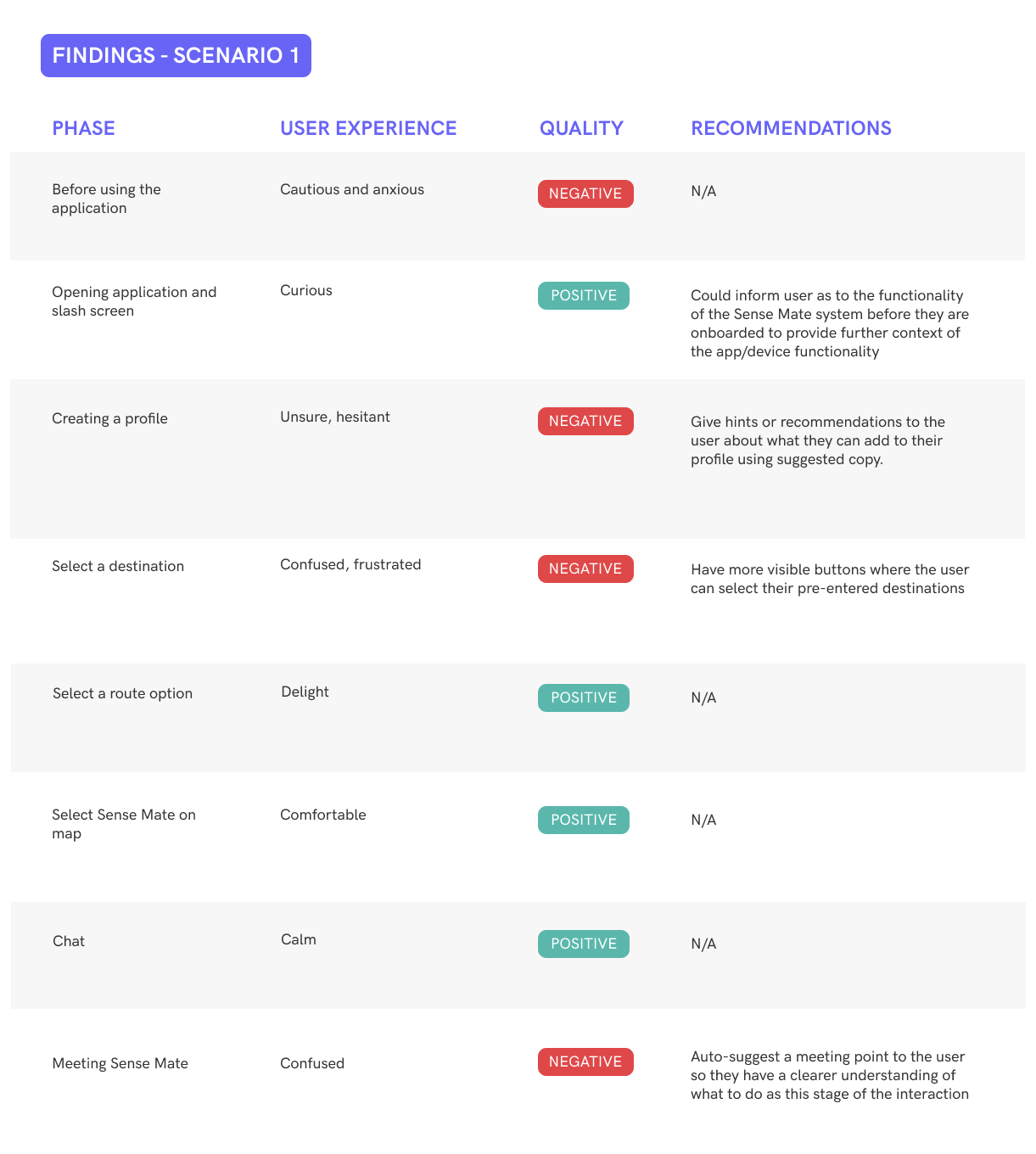
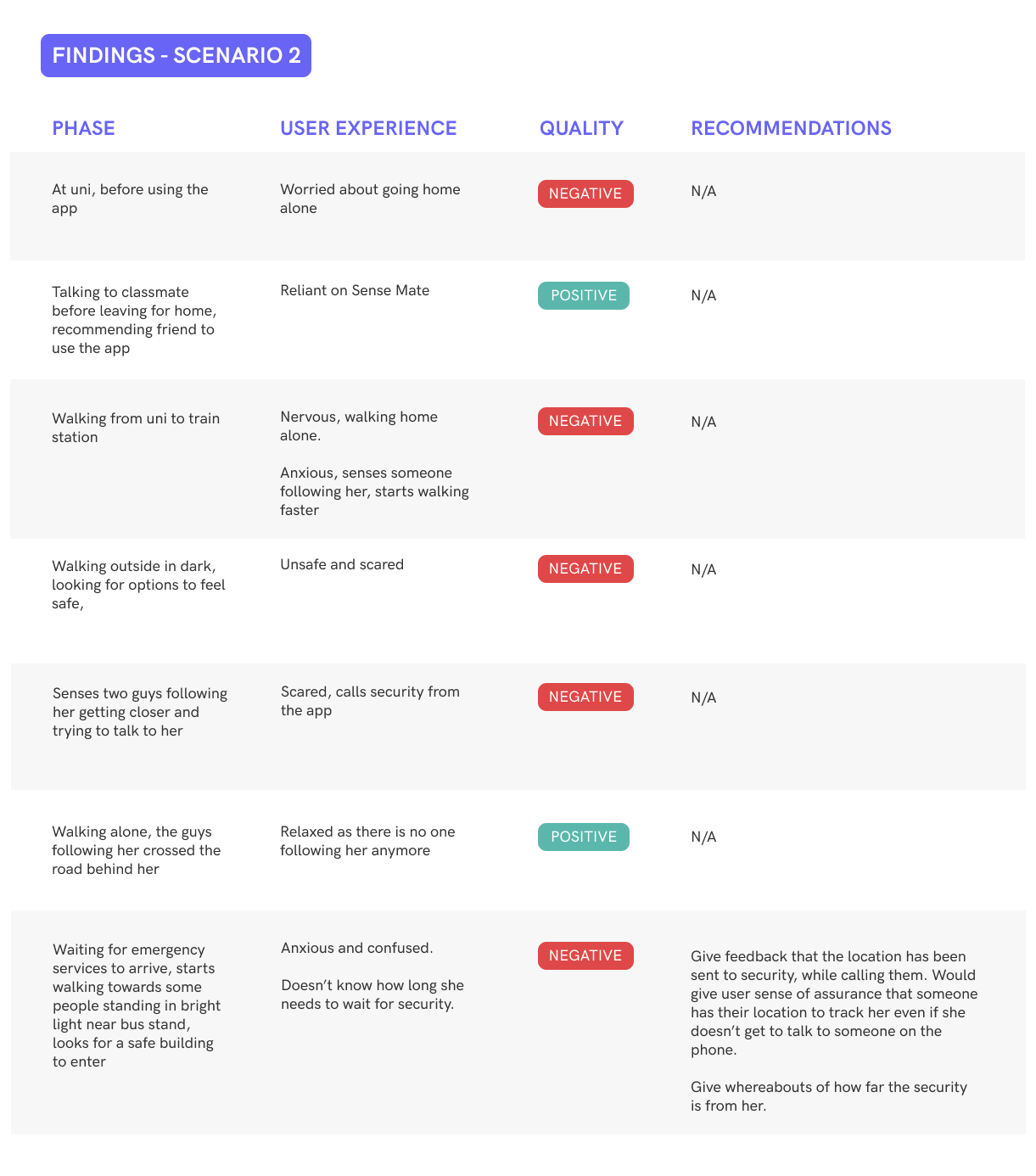
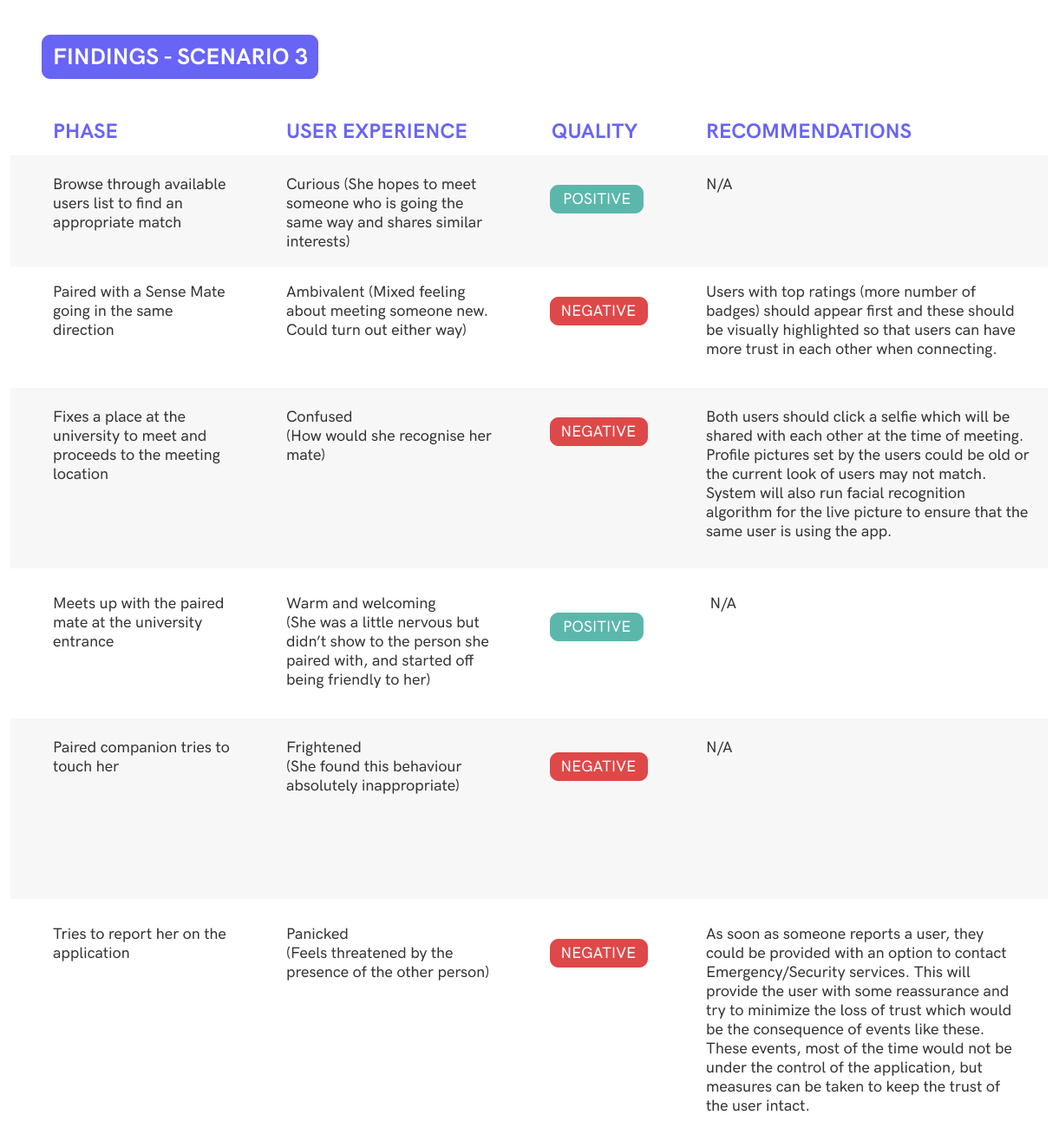
The user experience evaluation surfaced many considerations for
design to support trust. This was especially prevalent in allowing
the users to develop a relationship by chatting before choosing to
meet and travel together.
One further iteration was conducted after these findings were
established.
Video and Graphics - Shot, edited and produced by Jacob Laird
Designing for Trust & Safety
Designing experiences that foster trust and security is a complex goal. Through the development of the Sense Mate application, I gained a deeper understanding of how empowering users to develop social connections can allow them to feel more comfortable and at ease, especially when they would otherwise feel anxious.
Context and User Experience Evaluations
User experience evaluations allow a richer understanding of what factors affect the user experiences in certain scenarios. Each of the three scenarios surfaced unique issues which we had not yet considered in previous research allowing to refine the prototype further.